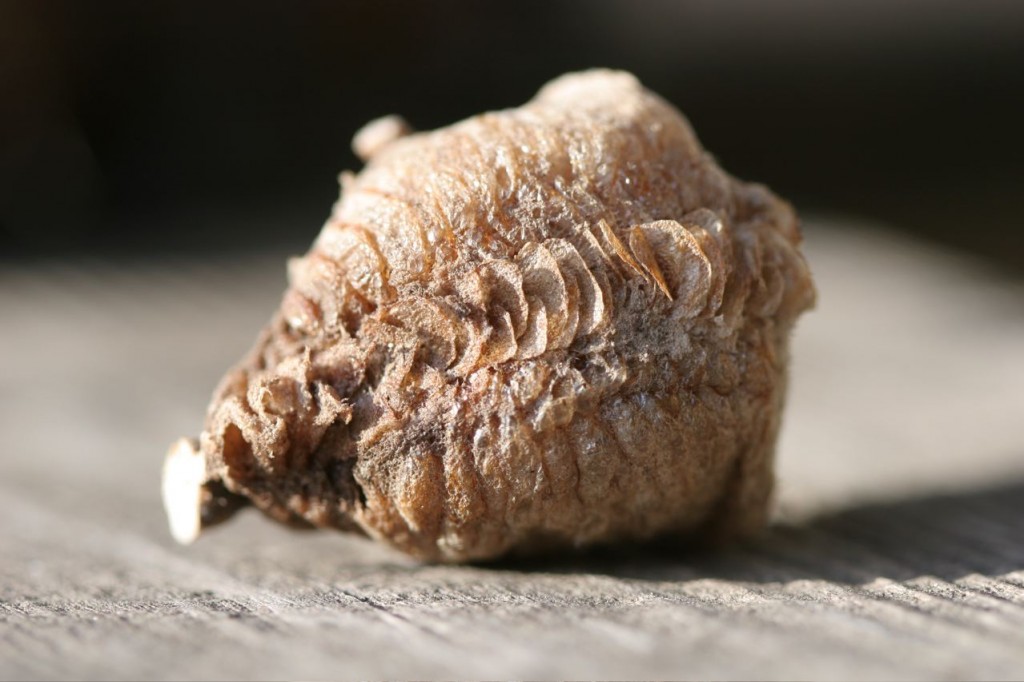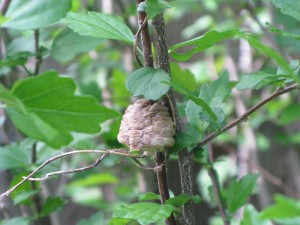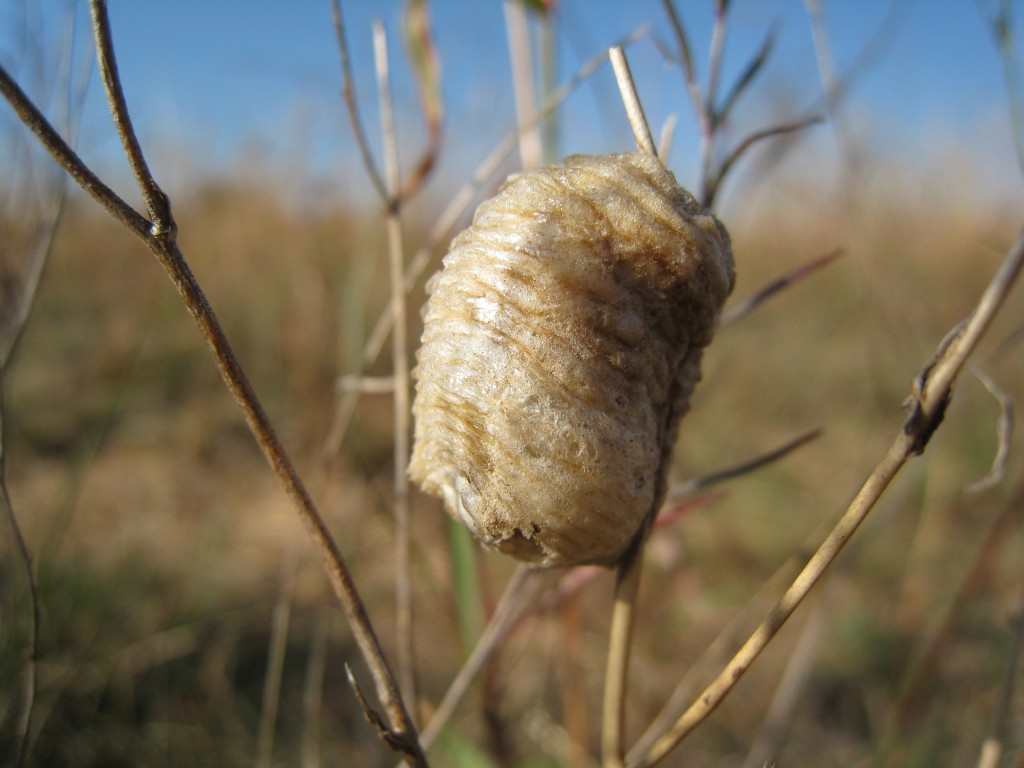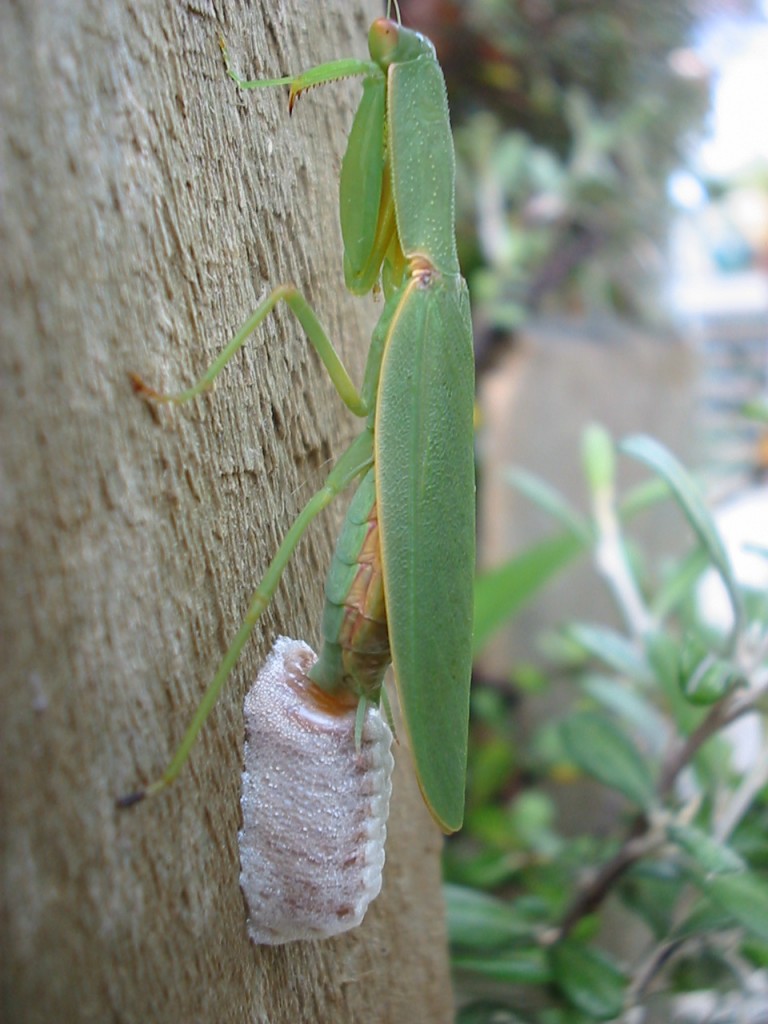What's That? Identifying Preying Mantis Egg Cases

A Quick Introduction
Now that Spring weather is finally upon us, it's time to talk about hatching young. In today's post I want to introduce you to preying mantis egg cases. Early spring is a great time to spot them because they usually hang from twigs or they are laid on bare wood and natural surfaces. Without leaves to obstruct your view (or in early leaf out), they're fairly easy to spot.
Praying mantises are invertebrates that have incomplete metamorphosis. This means that their young look like little adults and they don't make a cocoon like butterflies. Their life stages are egg, nymph, and adult. I'll do another post on mantid natural history later, but for today, I'm going to focus on their egg cases.
There are over twenty types of mantis native to the US and they are wide-spread. The Carolina mantis is the most common and there are two introduced mantis species from China and Europe. Most of these species are insectivorous (eating insects and sometimes even small mammals or hummingbirds) and they participate in the cannibalism of mates (females eat the males during reproduction). I will say from experience, that young mantises, unless separated, will also eat each other. In the Autumn when the days are still warm, mantises will mate. After mating, females lay between 50-400 eggs in a foamy egg case called an ootheca. The foam is secreted from a gland in her abdomen. This foam looks white when laid, but it turns brown as it hardens.

Here is a cross section of what an egg case looks like when laid open. Notice each egg has its own chamber and exit to the outside of the egg case.
There are a variety of shapes and sizes of mantis egg cases, and as you can imagine, they vary by species though many are very similar. If you haven't checked out Bugguide.net, they are a great resource for identifying insects, eggs, nymphs, and larvae of all sorts of insects, including mantises. Check out the images of different types of mantis egg cases on their web page.

Here are a few images of mantises actually laying their eggs:


The emergence of the young is like watching grains of rice, with little black beady eyes, wiggle out of the foam cases and then their legs deploy. When they finally stand up, they look like little miniature mantises. At first they are light colored, but as they mature and molt their deeper color comes in.
There are several types of parasitic wasps (Podagrion sp.) that will prey on the egg cases by depositing their eggs into the mass to feed on the mantises eggs and larvae. The wasps are tiny and usually have very long ovipositors (long tubes for sticking into the ootheca). Click on this link to bug-net for some images and also the OZ website for some up close images. This is something to be aware of if you're going to rear mantises for your class or inside the home.
It's quite fun watching mantis egg cases hatch in the Spring, and it's a great experience for students to watch the emergence. If you plan on bringing an egg-case inside, be sure to provide it with a mesh cage, with plenty of air circulation. You can tie it to a twig or branch. The little mantises should hatch in early to mid spring. It's best to take them outside where they came from once they hatch. Rearing isn't too difficult, but it's time-consuming and requires feeding flightless fruit flies or other insects and checking on them every day. If you don't feed them enough flies, crickets, or aphids, they will eventually cannibalize each other. You'll be left with one large mantis with a smile on its face!
Here are a few places you can find rearing information:
- Wikihow: How to Take Care of a Preying Mantis (not bad for a wiki)
- Keeping Insects Website
You can also buy kits online from a variety of sources from $30-$50.
Mantises are a fun organism to watch and observe. When you're out hiking, look for these brownish egg cases and know that our insect friends will soon be hatching.



